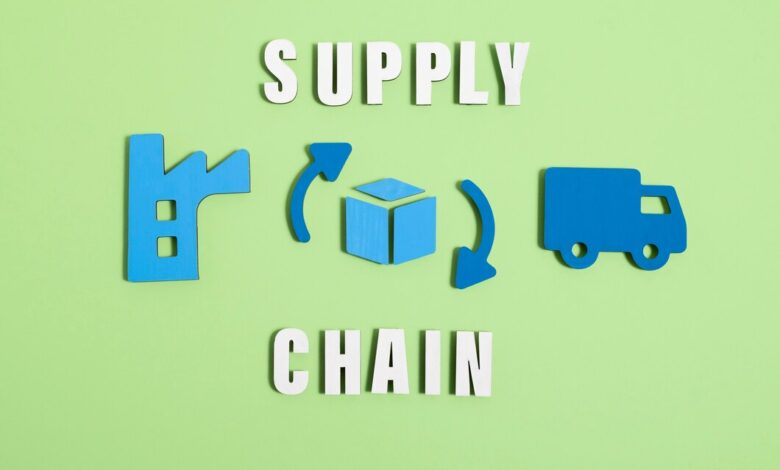10 Ways South African SMEs Can Create a Sustainable Supply Chain

Creating a sustainable supply chain is becoming increasingly important for businesses worldwide, and South African SMEs are no exception. A sustainable supply chain not only helps to reduce environmental impact but also improves efficiency, enhances brand reputation, and can lead to cost savings. For SMEs, building a sustainable supply chain may seem daunting, but with the right approach, it is achievable. Here are ten ways South African SMEs can create a sustainable supply chain:
1. Assess and Map Your Current Supply Chain
The first step towards creating a sustainable supply chain is understanding your current one. Conduct a thorough assessment to map out your supply chain from raw material sourcing to final delivery. Identify the environmental and social impacts at each stage, such as carbon emissions, waste production, and labor practices. This will help you pinpoint areas where improvements can be made and set a baseline for measuring progress.
2. Source Locally Where Possible
Sourcing locally can significantly reduce the carbon footprint of your supply chain. By choosing local suppliers, you minimize the need for long-distance transportation, which reduces greenhouse gas emissions. Additionally, supporting local businesses strengthens the South African economy and creates jobs. When selecting local suppliers, prioritize those who also follow sustainable practices, ensuring that sustainability is integrated throughout the entire supply chain.
3. Partner with Ethical and Sustainable Suppliers
Collaborating with suppliers who share your commitment to sustainability is crucial. When evaluating potential suppliers, consider their environmental and social responsibility practices. Do they use renewable energy? How do they manage waste? What are their labor practices? Working with ethical and sustainable suppliers helps ensure that your supply chain is environmentally friendly and socially responsible from start to finish.
4. Implement Circular Economy Practices
The circular economy model emphasizes reducing waste, reusing materials, and recycling products at the end of their lifecycle. SMEs can adopt circular economy practices by designing products that are easier to repair, reuse, or recycle. Encourage suppliers to do the same by opting for materials that have a lower environmental impact and promoting the use of recycled or biodegradable packaging. This approach not only reduces waste but can also lead to cost savings by minimizing the need for new raw materials.
5. Reduce Energy Consumption and Emissions
Reducing energy consumption and emissions within your supply chain is vital for sustainability. This can be achieved by optimizing logistics, such as improving transportation routes to minimize fuel usage or investing in energy-efficient technologies in production processes. SMEs can also work with suppliers to encourage the use of renewable energy sources and more efficient production methods. Regularly monitoring energy use and emissions can help identify further opportunities for improvement.
6. Minimize Waste Through Lean Practices
Implementing lean practices in your supply chain can help minimize waste and improve efficiency. Lean practices involve identifying and eliminating non-value-adding activities, such as excess inventory or overproduction. By streamlining operations, SMEs can reduce waste, lower costs, and improve overall productivity. Engage your suppliers in adopting lean practices to ensure that waste reduction is prioritized throughout the supply chain.
7. Invest in Technology for Transparency
Technology plays a crucial role in creating a transparent and sustainable supply chain. Invest in digital tools that provide real-time data on supply chain activities, such as inventory levels, supplier performance, and environmental impact. This transparency allows SMEs to monitor sustainability metrics, track progress, and quickly address any issues that arise. Blockchain technology, for example, can be used to verify the sustainability credentials of suppliers and ensure that products are sourced responsibly.
8. Promote Fair Labor Practices
A sustainable supply chain is not only about environmental impact but also about social responsibility. Ensure that all suppliers in your supply chain adhere to fair labor practices, including safe working conditions, fair wages, and the prohibition of child or forced labor. Conduct regular audits of your suppliers to ensure compliance with labor standards and work with them to address any issues. By promoting fair labor practices, SMEs can contribute to social sustainability and enhance their reputation as ethical businesses.
9. Educate and Engage Your Workforce
Building a sustainable supply chain requires the involvement of your entire organization. Educate and engage your workforce on the importance of sustainability and how they can contribute. Provide training on sustainable practices, encourage innovation in reducing environmental impact, and create a culture of sustainability within your SME. When employees are aware of the company’s sustainability goals, they are more likely to contribute positively and help drive continuous improvement.
10. Set and Monitor Sustainability Goals
Finally, establish clear sustainability goals for your supply chain and regularly monitor progress. These goals should be specific, measurable, achievable, relevant, and time-bound (SMART). For example, you might aim to reduce carbon emissions by 20% within five years or to eliminate single-use plastics from your supply chain by 2025. Regularly review your progress towards these goals and adjust your strategies as needed. Transparency in reporting on sustainability efforts can also enhance your brand’s credibility and appeal to environmentally conscious consumers.
Creating a sustainable supply chain is a strategic move that can benefit South African SMEs in numerous ways. By reducing environmental impact, improving efficiency, and enhancing brand reputation, a sustainable supply chain can provide a competitive edge in the market. While the journey towards sustainability may require significant effort and investment, the long-term benefits are well worth it. By implementing these ten strategies, South African SMEs can play a crucial role in promoting sustainability within their industries and contribute to a more sustainable future for the country.




